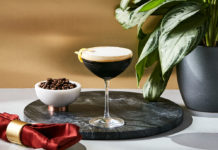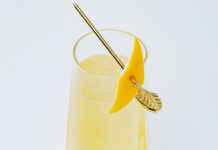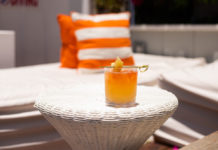
 Hidden in plain sight in The Cottonmouth Club’s logo is the Latin phrase, “utile dolci,” which means “the useful with the agreeable.” The phrase could be considered one of the venue’s first Easter eggs, but it’s also fitting as a working philosophy for a bar that bills itself as the “new homage to the soul of rock n’ roll.”
Hidden in plain sight in The Cottonmouth Club’s logo is the Latin phrase, “utile dolci,” which means “the useful with the agreeable.” The phrase could be considered one of the venue’s first Easter eggs, but it’s also fitting as a working philosophy for a bar that bills itself as the “new homage to the soul of rock n’ roll.”
“We really want to make sure we’re facilitating those opportunities for people to come in and have a great time, listen to great music, sip incredible cocktails, and feel comfortable,” says Mike Raymond, Co-Founder of The Cottonmouth Club.
Raymond opened the bar with Co-Founder Michael Neff, who he’s known for eight years. “We have similar ideologies when it comes to what bars are and what we think bars should be,” he says. “We go about things a little bit differently, but we’re after the same end result.”
When they started discussing opening a bar together, those similar ideologies came into play. The duo had both separately run and managed single-spirit venues, so they wanted to go in a different direction. They instead settled on a time period for their jumping off point—specifically the late 70s, early 80s in the East Village of New York City where a number of ideas, concepts, and music genres were converging.
“At any given night, you’d be in a space, and it could be an art happening, it could be a live band performing, any number of things could happen,” says Raymond.
Raymond and Neff looked into a number of different cities for their bar, but ultimately settled on Houston, which has a growing hospitality scene. Raymond is also very familiar with the city after running the whiskey bar Reserve 101 there for the last ten years. (Note: Raymond and Reserve 101 were featured as the Q&A in our May 2018 issue.)
The co-founders leased a large, two-story space in the historic Brewster Building of downtown Houston. The name “The Cottonmouth Club” is a dual reference to the prohibition-era Cotton Club in New York City as well as to the cottonmouth snake, which is indigenous to the area and adds a bit of edge to the branding.
Greg Swanson headed up the design of the eclectic, two-story bar and aside from shared industrial elements, each floor has a different feel.
“On both floors, we have exposed original brick—the building goes back to 1874,” explains Raymond. “There are also I-beam braces that run the full height of the building so that said brick wall doesn’t collapse one day. So it gives it a little bit of an industrial feel.”
Upstairs is reminiscent of a Soho artist’s loft with giant windows and white walls (except for the one wall with exposed brick). “We use that space for a variety of things—private parties, special events, brand activations, etc.,” says Raymond.
The upstairs space is also home to the occasional pop-up by guest bartenders or Neff himself when he’s in town.
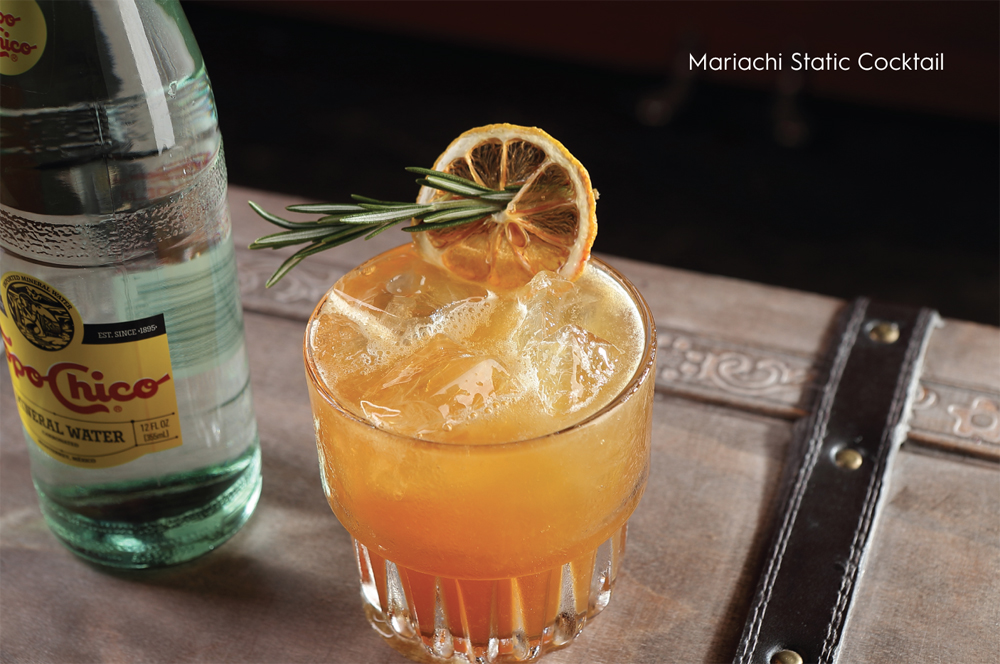
There are plenty of references to music and musicians that fit in with the bar’s rock n’ roll theme, including three giant murals that grace the walls upstairs. “They represent the past, present, and future of Houston music,” says Raymond. “The past is Lightnin’ Hopkins, who is the legendary blues guitarist who is buried about five to six blocks from where the bar is. Present is Billy Gibbons, famed blues guitarist from ZZ Top. The future is Kam Franklin, lead singer of The Suffers, who have made a huge name for themselves and are doing national and international tours.”
Downstairs features a dissected Bowie mural and two giant murals—one of Paul Stanley from KISS and another hidden beneath a top coat of paint. Raymond himself painted all of the murals in The Cottonmouth Club.
“The front of the bar has a variety of different ‘patron saints’—musicians that are inspirational or in some way or form significant to who we are and what we are,” adds Raymond.
The foyer of the downstairs bathroom pays homage to Elvis’ Graceland’s Jungle Room with zebra print, jungle-themed wall paintings, and a red velvet couch.
The three single-person bathrooms on the downstairs floor are named Patti Smith (women), Sam Shepard (men), and Patti Smith and Sam Shepard—a reference to the two’s relationship.
These Easter eggs help transform the bar into a more interactive experience. “We want to create an environment that is welcoming, immersive, and has lots of little Easter eggs to discover as people live in the space,” explains Neff.
This immersive experience extends into the experiential cocktail menu. “Everything about this menu is meant to integrate into the bar itself and reflects the experience that we’re trying to present overall,” says Neff. “As the cocktail scene evolves, this is the direction I hope we head—more interactivity, more inclusion, more participation on both sides of the bar.”
That participation shows up in a number of places on the cocktail menu, including in the “pinwheel” selections (multiple variations of the Old Fashioned and French 75/76). The pinwheels break down each drink into its base elements—for the Old Fashioned, a base spirit, sweet element, and bitter element, and for the French 75/76, a base spirit and bubbles—and allow guests to choose for themselves.
Interactivity also happens in the occasional pop-up upstairs, where Neff will offer what The Cottonmouth Club calls the “reverse speakeasy cocktail experience.” Guests come in and pick
a glass from a selection of eclectic and traditional glassware. They then pick from a variety of different garnishes. From there, Neff and the bartenders will ask a few questions, and based on the responses, will craft a bespoke cocktail right there on the spot.
“There’s a bit of magic and mystery to it,” says Raymond. “When you can connect in that kind of manner with someone, it’s really something special. It’s a very unique experience, and it’s not something you’re getting anywhere else.”
Aside from these offerings, The Cottonmouth Club’s menu is assembled in sections, including Classics and House Originals. “With the classic cocktails, all drinks start with the letter J. So Jungle Bird, Jack Rose, Julep, and Japanese Cocktail,” says Raymond. “For the House Originals, all the names are derived from song lyrics. Either the drink reminded us of the song or the song worked its way into the drink.”
In this way, the influence of music stretches beyond the design and the playlist (featuring a selection of modern and classic tunes) to even the cocktail menu. “Tasting through the menu should feel like listening to a mix-tape, and everything about it—from the format to the names of the cocktails—is meant to evoke a feeling that certainly includes the cocktail, but is not at all limited to what is in the glass,” says Neff.
The House Originals also include a parenthetical aside that compares the original concoction to a well-known cocktail so people can get an idea of what the drink tastes like. “It makes things as approachable as possible,” says Raymond.
In addition, the menu includes shots, Texas beers, wine by the box or can, and two perennial cocktails, The Cosmopolitan and The Cottonmouth Club Cocktail. The latter is an original riff on a classic sour, made with The Cottonmouth Club’s House-Blended Whiskey created by Neff and Raymond, Avua Amburana Cachaca, fresh lemon, a berry melange, Peychaud’s Bitters, and egg white, all shaken and served over ice.
A new batch of the house-blended whiskey is constantly being rolled out with different flavor profiles. “We take an approach of a Scottish blended scotch where you use a white whiskey as the base and then you’re using full-flavored whiskies to accent and add flavor. We put them in three-gallon used bourbon barrels from Yellow Rose Distilling here in Houston,” says Raymond. “Batch one and two had a Canadian whiskey as its base. We added bourbons, ryes, and American single malt to come up with an overall flavor, and we’d dump it into the [bourbon] barrel.”
Batch three of the house-blended whiskey used Seagram’s 7 American-blended whiskey, and the fourth had a George Dickel unaged whiskey for its base. “They’re fun, they’re experiments,” says Raymond. “The more people buy into what we’re doing, the more fun we can have with it.”
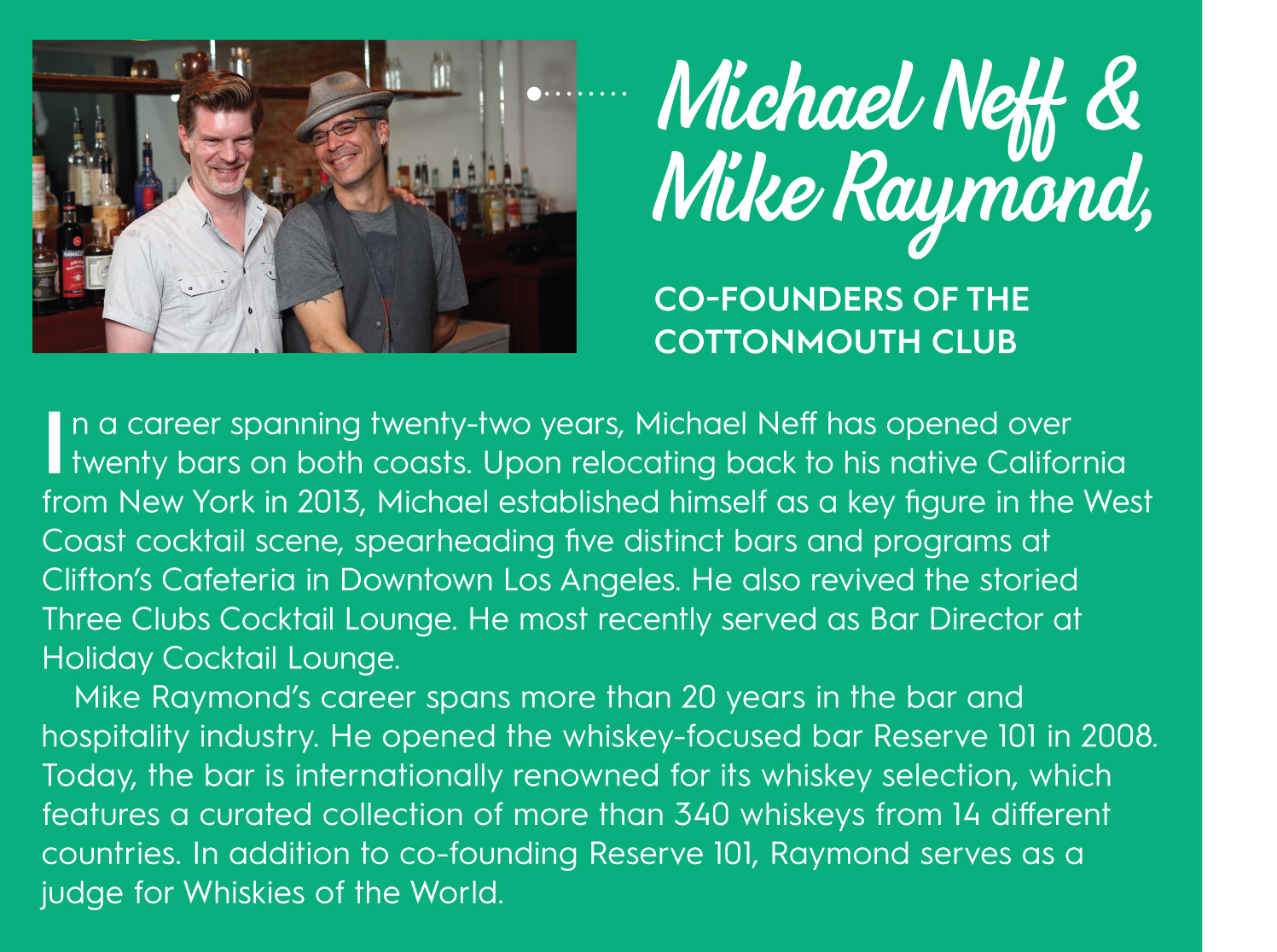
Want to stay up to date between issues? Click here to subscribe to our newsletter.


